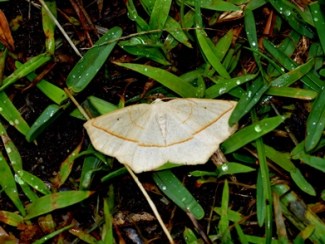One of the prettiest insects that can currently be seen in your garden is an extremely small moth named the ailanthus webworm moth (Atteva aurea).
This mite is less than a half inch long and has a wingspan of roughly an inch. However, what it lacks in size, it more than makes up in beauty. This slender orange moth is distinctively marked with four bands. Each band is comprised of tiny irregular black-bordered, light-yellow squares.
Since this day-flying moth produces several generations (flights) a year, you are likely to see it visiting your flowers from spring through fall. I spot them in autumn more than at any other time of the year. Currently, I am most often find this little jewel feeding on goldenrod.
Although this moth is native to South Florida, it has expanded its range throughout most of the United States. This range expansion was brought about by the introduction of the tree of heaven (Ailanthus altissima). This import from china has been widely planted in both urban and suburban areas across the country. Sadly, this import has proven to be highly invasive. As a result, it has become naturalized in Georgia and elsewhere.
It seems that the ailanthus webworm moth’s main host plant is the paradisetree (Simarouba glauca). However, as it turns out, ailanthus webworm moths adopted the tree of heaven as host plant. This allowed the tiny moth to follow the tree of heaven across America.






 The moth seen in this photo was found by my wife Donna in the grass at our Monroe County home one afternoon shortly after a spring shower.
The moth seen in this photo was found by my wife Donna in the grass at our Monroe County home one afternoon shortly after a spring shower.